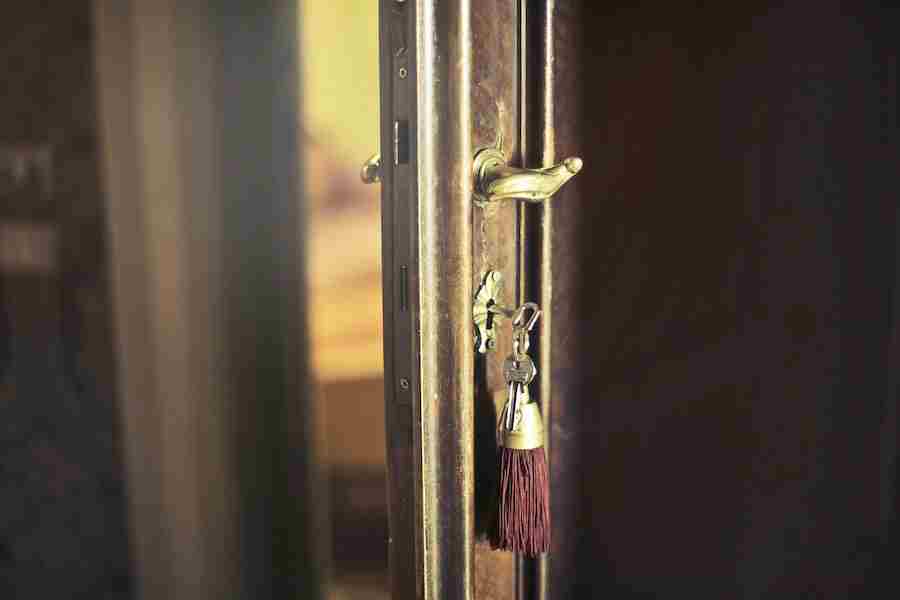Do you ever wonder if there is a universal key that can open any lock? For centuries, people have searched for a master key that can open any lock, but is it even possible? The answer is complicated and depends on the lock you’re trying to open. In this article, we will explore the various possibilities and determine whether or not there is a master key that can open all locks. We will look at the different types of locks and the techniques used to open them, as well as any possible solutions that could help you open any lock with a single key. So, buckle up, and let’s explore the possibilities of a master key for all locks!
Is There A Master Key For All Locks?
The answer to this question is a resounding no. Each lock has its unique key, and there is no such thing as a master key that can open all locks. Locks require different types of keys — from traditional mechanical keys to electronic or keycard access systems. Additionally, many locks are designed with anti-pick or anti-bump features, which make them virtually impossible to open without the correct key. This means that there is no single master key that will work on all locks, and even if there were, it would be highly impractical as it would require a great deal of time and effort to carry around in your pocket or purse. In short, the answer is no — there is no such thing as a master key that can open all locks.
Different Types Of Locks
- Padlocks: These are small, portable locks that have a hinged shackle. They are typically used to secure items such as bicycles and outdoor gates.
- Combination Locks: These locks require a combination of numbers or symbols to open them.
- Deadbolts: These are heavy-duty locks that are usually installed on doors. They must be locked with a key from the outside and have an additional latch mechanism on the inside to keep them secure.
- Electric Locks: These locks require an electrical current to open them. They are typically used in commercial settings, such as offices and warehouses.
- Cam Locks: These cylindrical-shaped locks use a key to open them. They are often used in lockers and cabinets.
- Mortise Locks: These locks typically require two keys – one to insert into the lock outside and another to turn from inside the lock cylinder.
- Tubular Locks: These cylindrical-shaped locks use a key with pins to open them. They are commonly used on vending machines and safes.
- Magnetic Locks: These locks use a magnet to open and close the lock mechanism when a card is swiped or inserted.
- Key Card Locks: These locks are similar to electric locks and use a key card or fob with a chip to open them. They are often used in hotels.
- Biometric Locks: These locks use biometric technology to identify the person trying to access the lock, usually through fingerprints or facial recognition.
The Techniques Used To Open Locks
- Lock picking – Lock picking is the most common method used to open locks. It involves using a specialized pick and tension wrench to manipulate the pins inside the lock and unlock it without needing a key.
- Bump keys – A bump key is also known as an a999 key, as it has been cut so that each pin has been raised to the maximum height. This makes it easier for the bumps to pass through the pins and unlock the lock with a single movement.
- Key Impressioning – Key impression is a technique used to create a key from scratch by pressing down on blank keys until all of the pinpoints have been set correctly. This is a time-consuming process, but it is possible to create a key that will open any lock with this method.
- Lock bypass – Lock bypassing involves using specialized tools and techniques to slip the lock without engaging its pins or springs. This can be done by using tension wrenches or paper clips to press down on the parts of the lock that activate its release mechanism.
- Lock Bypass Tools – These are specialized tools, such as lock picks and tension wrenches, designed to open locks without needing a key. They can be used to open simple pin tumbler locks or more complicated electronic locks.
- Magnetic Keys – Magnetic keys use magnets to move the pins inside of a lock and unlock it. This is done by placing an external magnet on the outside of the lock and using its magnetic force to activate the internal pins, allowing them to line up correctly and unlocking the lock.
- Lock Bumping – Lock bumping requires a specialized tool known as a bump key which has been cut in a specific way to line up with the pins inside of the lock. When struck, the bump key will cause the pins to shift slightly and unlock the lock.
- Key Duplication – Key duplication is when a copy of an existing key is made to open a lock. This can be done using special machines or by hand with a blank key and a file.
- Key Cutting – Key cutting is creating a new key from scratch, using specific tools and techniques to cut the ridges on the edge of the key for it to fit into a specific lock.
- Lock Combinations – A combination lock requires you to enter a specific sequence of numbers to open the lock. This can be done by trial and error or by using a specialized tool to calculate the correct combination and unlock the lock.
Possibility Of A Master Key
- Mechanical Locks – Mechanical locks are some of the oldest designs and remain popular today. They consist of a series of levers or pins that must be manipulated to unlock the door or container. If there was a universal key for these types of locks, it would have to be able to manipulate all the different combinations of levers and pins.
- Combination Locks – Combination locks are popular in schools, businesses, and lockers. They typically consist of three or more dials that must be set to a specific combination to open the lock. There is no universal key for these locks, as each is uniquely coded with its combination. However, there are a few techniques that can be used to crack these locks, such as lock-picking or dial spinning.
- Electronic Locks – Electronic locks use an electronic mechanism to open and close. They are typically found in modern buildings and require the user to enter a code or swipe a card in order to access the area. While it is possible to create a universal electronic key, it would require an incredibly secure authentication system that is unlikely to be cracked.
- Biometric Locks – Biometric locks are the most advanced type of locks available and use biological features such as fingerprints or retinal scans to unlock them. There is no single master key for these locks, as the user must be authenticated before access is granted.
- Key Card Lock – Key card locks are often found in hotels and require the user to insert a key card to open the door. While it is possible to create a universal key card that can open any lock, it would require an expensive and complex authentication system that would be difficult to crack.
- Magnetic Locks – Magnetic locks use an electromagnetic field to lock and unlock a door or container when activated by a key card or code. There is no single master key for these locks, as the security system must be programmed with its unique code to work properly.
- Digital Key Lock – Digital key locks are an increasingly popular type of lock and use a combination of letters, numbers, and symbols to open them. While it is possible to create a universal key for these types of locks, the authentication system would have to be incredibly secure to prevent access from unauthorized users.
- Smart Lock – Smart locks are some of the most secure locks available and use a variety of authentication methods, such as Bluetooth, Wi-Fi, and NFC, to open the door. There is no single master key for these locks, as each one requires its unique security protocol to work correctly.
Conclusion
Ultimately, it’s important to remember that no master key can open all locks simultaneously. However, this doesn’t mean that you can’t find a solution to open any lock. You just need to get creative and rely on multiple solutions.
FAQ’s
Q: How can I open a lock without a key?
A: Depending on the type of lock, you can use a locksmith to open the lock for you. Alternatively, if it’s a combination lock, you may be able to crack the code and open it without a key.
Q: Are biometric locks secure?
A: Biometric locks are some of the most secure types available. They use fingerprints, iris scans, or retinal scans to authenticate the user before access is granted.
Q: Are key card locks secure?
A: Yes, key card locks are relatively secure and require the user to insert a key card to open the door. However, it would be possible for someone to create a universal key card that could open any lock, which is why it’s important to invest in a secure authentication system.
















Leave a Reply